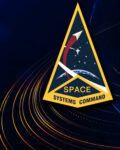Singapore is set to significantly enhance its maritime surveillance and anti-submarine warfare (ASW) capabilities with the acquisition of four Boeing P-8A Poseidon aircraft from the United States. The procurement, valued at approximately $1.3 billion under a Foreign Military Sales (FMS) agreement, marks a major leap in the Republic of Singapore Air Force’s (RSAF) ability to monitor and secure its surrounding waters amid rising regional naval activity.
Strategic Context: Rising Subsurface Threats in Southeast Asia
The Indo-Pacific region has witnessed a steady increase in submarine activity over the past decade. China’s expanding underwater fleet—including nuclear-powered ballistic missile submarines (SSBNs) and attack submarines (SSNs)—alongside growing investments by regional navies such as Vietnam, Indonesia, and Australia in conventional submarines have raised concerns about underwater domain awareness.
Singapore’s strategic location at the crossroads of major sea lanes like the Strait of Malacca makes it particularly vulnerable to subsurface threats. The acquisition of P-8As is intended to bolster deterrence against potential adversaries while enhancing interoperability with U.S. and allied maritime forces conducting freedom-of-navigation operations in contested zones.
P-8A Poseidon: A Proven Multi-Mission Maritime Platform
The Boeing P-8A Poseidon is one of the most advanced multi-mission maritime patrol aircraft currently in service. Based on a modified 737-800ERX airframe, it combines high-altitude performance with long endurance—capable of flying over 1,200 nautical miles (2,222 km) from base with four hours on station.
Key capabilities include:
- AN/APY-10 multi-mode radar for surface search and periscope detection
- Advanced acoustic sensor suite including sonobuoy launchers and onboard processing for submarine tracking
- Electro-optical/infrared (EO/IR) turret for visual identification
- Weapons bay capable of deploying Mk 54 lightweight torpedoes and Harpoon anti-ship missiles
- Secure communications systems compatible with Link 16 and SATCOM networks
The aircraft also supports intelligence gathering missions via signals intelligence (SIGINT) payloads and can operate as part of a networked C4ISR architecture—making it more than just an ASW platform.
Transition from Fokker F50 MPA Fleet
The RSAF currently operates a small fleet of upgraded Fokker 50 maritime patrol aircraft that have served since the early 1990s. While these platforms have undergone avionics enhancements over time—including radar upgrades—they lack modern ASW sensors such as magnetic anomaly detectors or advanced acoustic processing systems.
The transition to the P-8A represents a generational leap in capability. Not only does it provide longer range and endurance, but it also introduces real-time data fusion across multiple sensor domains—a key requirement for modern maritime domain awareness operations.
Program Timeline and Industrial Participation
The U.S. State Department approved Singapore’s request for four P-8As via FMS in September 2023. According to official Defense Security Cooperation Agency (DSCA) notifications, the package includes:
- Four fully equipped aircraft
- Tactical Open Mission Software Suite (TOMSS)
- Spares, support equipment, training systems
- Logistics support through U.S. Navy channels
Boeing will serve as prime contractor alongside key suppliers such as Raytheon Technologies (radar), Northrop Grumman (mission systems), and L3Harris Technologies (communications). Deliveries are expected between late 2026 and mid-2027 based on current production schedules.
No significant offset agreements have been publicly disclosed; however, Singapore has historically sought local industrial involvement through maintenance or training arrangements under its Defence Science and Technology Agency (DSTA).
Regional Interoperability Gains for Five Power Defence Arrangements
The RSAF’s adoption of the P-8A aligns it more closely with other regional operators including Australia (12 units), India (~12 units under “P-8I” designation), South Korea (6 units), New Zealand (4 units), Norway (5 units), Germany (~5 ordered), Canada (~14 planned), and NATO allies like the UK.
This commonality enhances interoperability during multinational exercises such as RIMPAC or those conducted under the Five Power Defence Arrangements (FPDA)—a longstanding security pact involving Singapore, Malaysia, Australia, New Zealand, and the UK. The platform’s compatibility with NATO-standard datalinks also facilitates seamless integration into coalition C4ISR frameworks.
Operational Implications for Maritime Security Posture
The introduction of P-8As will allow Singapore to conduct persistent wide-area surveillance across critical chokepoints like:
- The Strait of Malacca – vital for global energy shipments
- The South China Sea – increasingly contested by Chinese naval forces
- Sulu-Sulawesi Seas – known routes for piracy/smuggling operations
This capability also strengthens Singapore’s contribution to multilateral efforts against illegal fishing or trafficking under frameworks like RECAAP or ASEAN-led initiatives. In peacetime scenarios, these assets can support humanitarian assistance/disaster relief missions by providing rapid situational awareness over large oceanic areas.
Pacing Future Threats Through Persistent ISR Investment
While Singapore maintains a policy of strategic ambiguity regarding specific adversaries or threat scenarios, this acquisition underscores its commitment to maintaining qualitative edge through high-end platforms rather than massed numbers. The RSAF’s focus on networked ISR assets—complemented by UAVs such as Heron TP—is likely to expand further given regional trends toward multi-domain integration.
The move also reflects growing recognition among smaller states that persistent airborne ISR—especially when fused with naval radar data—is essential not only for deterrence but also for resilience against gray-zone tactics involving unmarked vessels or submerged threats operating below traditional detection thresholds.
Conclusion: A Strategic Leap Forward in Subsurface Domain Awareness
The procurement of four Boeing P-8A Poseidons positions Singapore among an elite group of nations fielding advanced airborne ASW capabilities. As regional waters grow more contested—and submarine proliferation continues apace—the RSAF’s investment ensures that Singapore remains capable not only of defending its own territory but also contributing meaningfully to regional stability through interoperable maritime surveillance operations.









